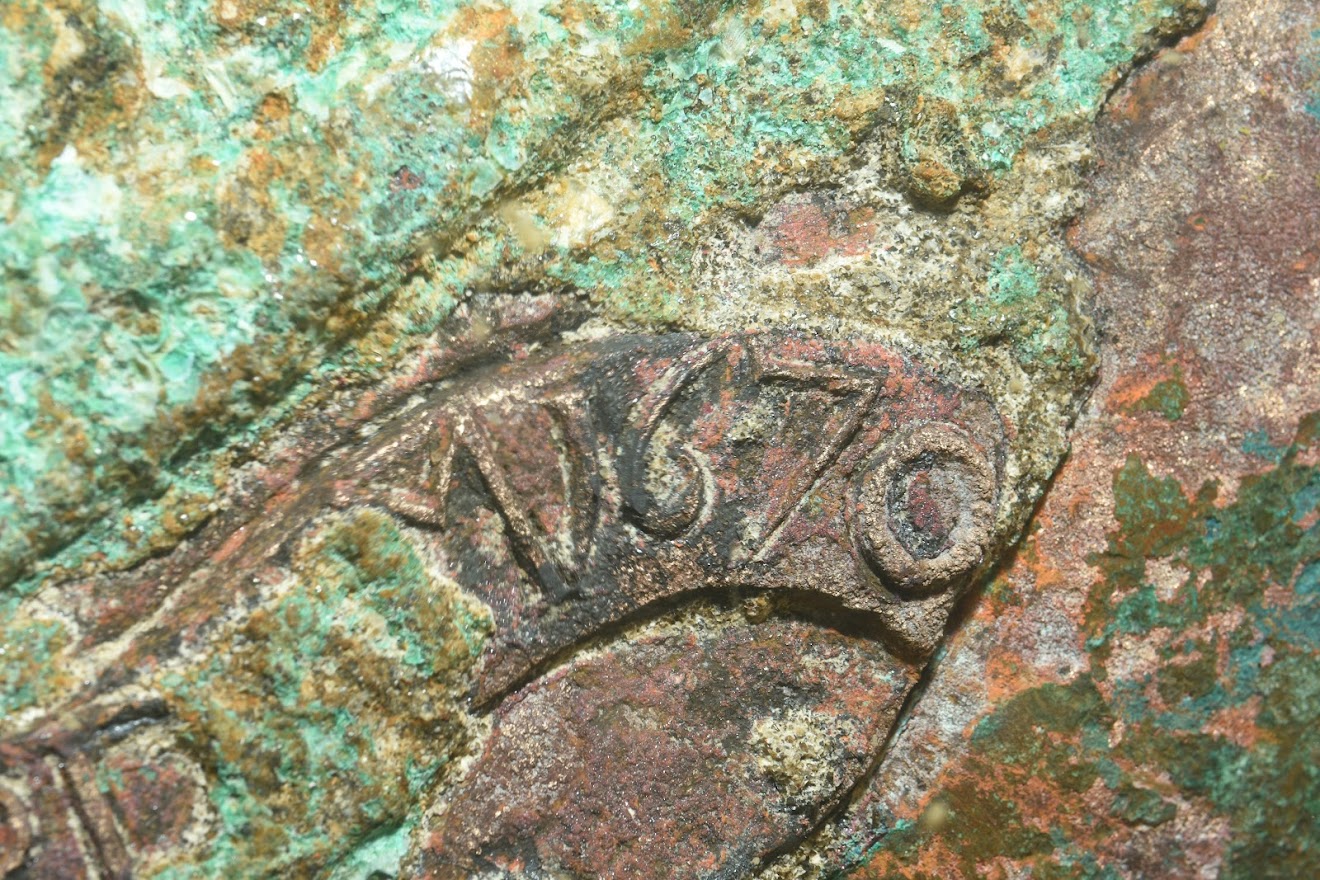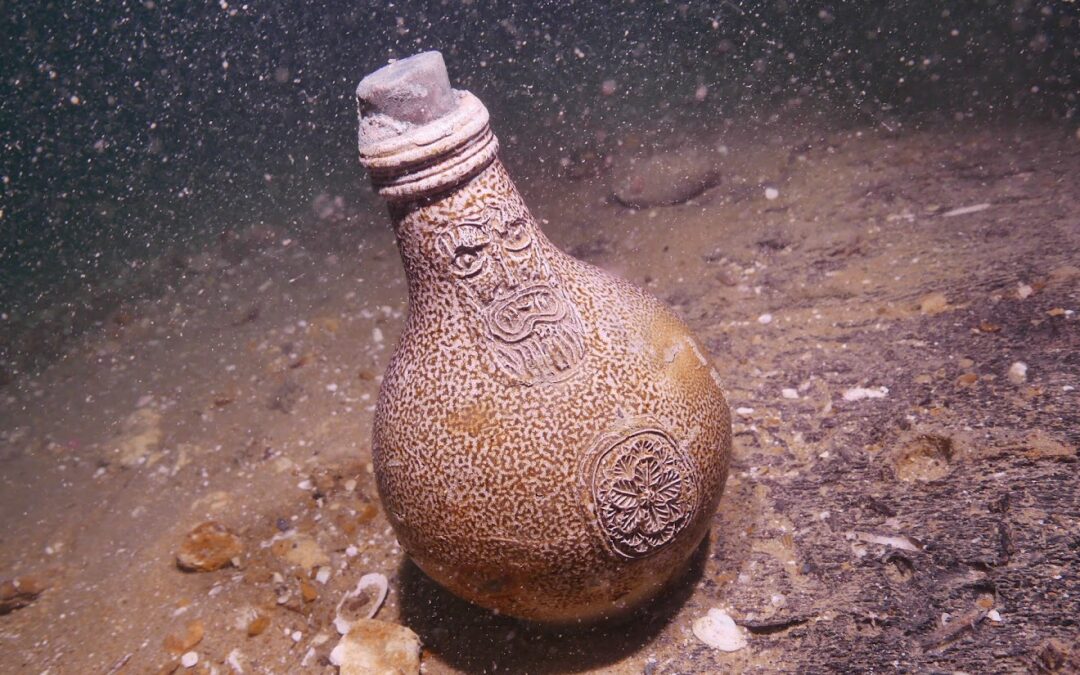An unknown protected wreck off the coast of Sussex in England has been identified as the seventeenth-century Dutch warship Klein Hollandia. Built in 1656, it was owned by the Admiralty of Rotterdam. The ship was involved in all the major naval battles of the Second Anglo-Dutch War (1665-1667).
A team of Dutch and British maritime archaeologists, from the Cultural Heritage Agency of the Netherlands (RCE), the Nautical Archaeology Society (NAS) and Historic England, has been working over the past year to identify the ship. They did this by collecting evidence during diving expeditions to the wreck with a team of professional and volunteer divers, as well as through archival research and dendrochronological research (tree-ring dating) of wood samples.
Until now, the wreck, which lies 32 metres deep on the seabed, was known as “the unknown wreck off the coast of Eastbourne” – but it has now been identified as the Klein Hollandia (built in 1656, it sank in 1672).
Also read: Satellites to protect Dutch shipwreck sites from looting
Italian marble and pottery
The condition of the wreck is remarkably good and it is possible that it could provide a wealth of information about how seventeenth-century Dutch warships were built and the ship’s activities during its final voyage. Material found on the seabed includes much of the wooden ship’s hull, cannons, tiles made of Italian marble and pieces of Italian pottery. The marble tiles came from quarries in the Apuan Alps close to Carrara in Italy. They were intended for the Netherlands and were likely to be used to build luxury homes.
The wreck was discovered in 2019 by David Ronnan (owner of a diving company) from Eastbourne and reported to Historic England. Following the discovery, the Klein Hollandia was deemed so important that the wreck was given the highest level of protection under the UK Protection of Wrecks Act 1973. Only licensed divers are allowed to dive to the wreck site. Ronnan and Mark Beattie-Edwards of the NAS are the licence holders and have been exploring the wreck since its discovery.
British Heritage Minister Lord Parkinson of Whitley Bay: ‘The identification of the Klein Hollandia offers a glimpse back into the seventeenth century, giving us the chance to learn more about the maritime history of this period and to discover treasures that have been underwater for hundreds of years. I am very pleased that thanks to this collaboration between the UK and the Netherlands, we have been able to solve some of the mysteries associated with this wreck – and protect it for future generations to continue researching.’
Also read: [VIDEO] AUV locates Shackleton’s Endurance shipwreck in Weddell Sea
Dutch warship
The Klein Hollandia, owned by the Admiralty of Rotterdam, was involved in all the major naval battles of the Second Anglo-Dutch War (1665-1667). In 1672, the ship was part of Admiral de Haese’s squadron accompanying the Smyrna fleet on its journey from the Mediterranean Sea to the Channel, en route to the Netherlands.
Near the Isle of Wight, the squadron was attacked by an English squadron under Admiral Holmes. Heavy fighting broke out on the second day – 23 March – in which the Klein Hollandia was badly damaged. The captain of this ship, Jan van Nes, was killed during the battle. The ship was overcome and boarded by the English, but shortly afterwards the Klein Hollandia sank with both English and Dutch sailors on board. This surprise action by the small squadron under Sir Robert Homes and Sir Frescheville Holles contributed to the start of the Third Anglo-Dutch War.

Identifying the wreck as a Dutch Warship
In August 2020, all indications pointed to the wreck being of Dutch origin, following the analysis of finds and research conducted in the UK and the Netherlands. The RCE funded an investigation by the NAS, which also involved bringing two stone tiles to the surface for analysis by experts from Historic England.
Petrographic examination (the use of microscopes to examine stone), mineral composition and isotopic analysis identified the stone as marble from the Apuan Alps close to Carrara in Italy, one of the places where the best Italian marble comes from.
Site at risk
In 2021, NAS divers identified damage to the wreck site, leading to a joint decision by the RCE and Historic England to support further investigation of the wreck. The three organisations are involved in a project to forensically mark objects on the seabed. This is a new form of technology that makes underwater objects traceable: a major step forward in protecting vulnerable underwater archaeological sites.
‘It was an absolute privilege to dive at this site!’ says Martijn Manders, coordinator International Maritime Heritage at the RCE (2017-2021). The identification process has been a great joint effort between our two countries and the cooperation continues, so we can learn more about this fascinating wreck site in the years to come. This project again underlines the close ties that archaeologists and heritage institutions from both countries have built over the years.’
Picture (top): A Bellarmine jug found on the seabed © James Clark.








